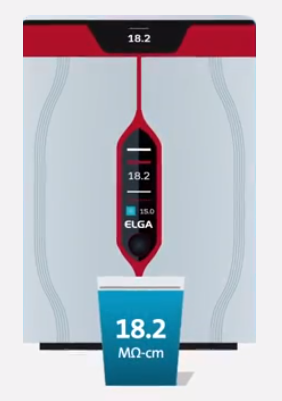Is Your Water Pure Enough?
ULTRA PURE WATER | TYPE 1

With purified water commonly used as a reagent in a wide variety of scientific and clinical applications, it is vital to ensure the correct level of purity is achieved and maintained.
What is Type 1 Water?
Type 1 water is most commonly known as Ultra Pure water. It is water that has undergone a high level of purification in order to meet stringent water purity requirements. The water type defines the water specification regarding the level of contaminants (such as organics, ions, pyrogens and bacteria) within the water.
Type 1 water reaches the theoretical ideal levels of purity, with a resistivity level of
18.2 MΩ-cm. Water of this quality is required for semiconductors, power and laboratory applications.
Endotoxins are also removed, and as such, Ultra Pure water typically contains <0.03 EU/ml, with nucleases and proteases at non-detectable levels.
Type 1 Ultra Pure water is utilised in some of the most sensitive and critical applications including:
- High Performance Liquid Chromatography (HPLC)
- Gas Chromatography (GC)
- Atomic Absorption Spectrophotometry (AAS)
- Inductively Coupled Plasma Mass Spectrometry
- Molecular Biology
- Mammalian Cell Culture
- In Vitro Fertilisation (IVF)
To achieve the required quality, the water undergoes very high levels of purification to remove contaminants and impurities such as:
Dissolved organics (e.g. Pesticides), Dissolved Inorganics (e.g. Iron, Copper, Lead), Bacterial Endotoxins, Suspended particles and colloids,
Trace Ions (E.g. Silica & Boron), Nucleases (RNase & DNase), Bacteria (<0.1 CFU/ml)
Is your water pure enough?
It is important that the correct type of water is used for the right purpose within the laboratory environment. Ensuring that water meets the required standard is also important. Water that does not meet the specified criteria for Ultra Pure water can adversely affect your results.
Commercially available bottled Ultra Pure water is often seen as a reliable and convenient option. However, it has several drawbacks. For example, once opened, the purity of the water in the bottle will begin to degrade and no longer conform to the standard required for the application. Also, if large quantities of Ultra Pure water are used by the lab then bottled water can become expensive and generate large quantities of plastic waste per year.
An in-house purification system can often prove to be the best investment, especially over the long term. The quality of the feed water supply can also vary over time and even between seasons, the chosen system must be able to overcome these variations.


